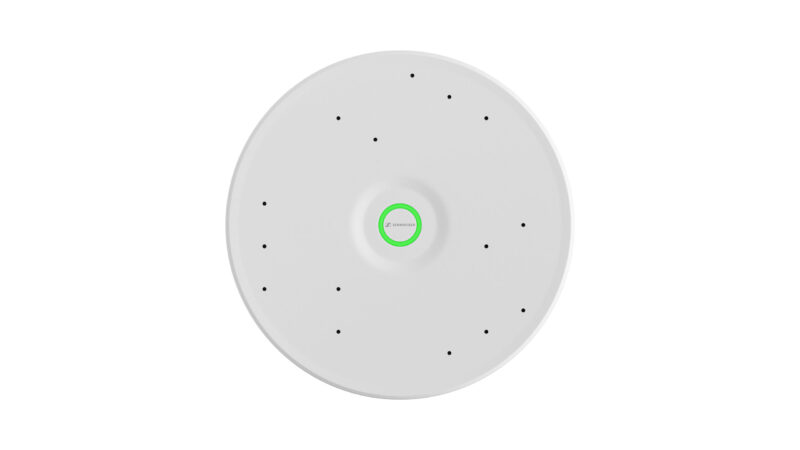Innovation, Iteration and Disruption
We had our first major return to trade shows this year in Orlando. It was a victory for AVIXA in that over 7,300 attendees and about 280 exhibitors showed up in person for the event. For those of us who couldn’t make it this year, social media brought us a lot of images from the floor, but one thing that was glaringly missing this year was the new product announcements that we usually see. There were a few, but they were comparatively light. It could be that manufacturers are saving them for ISE or for InfoComm 2022, but the silence on the product front got me thinking about the cycle of innovation we see in our industry.
 As cosmic luck would have it, I saw a tweet by Brian Solis that I felt made a good jump-off point for our discussion here.
As cosmic luck would have it, I saw a tweet by Brian Solis that I felt made a good jump-off point for our discussion here.
A creative mindset sees possibility and explores imaginative approaches to find and create new value.
A legacy mindset starts with existing paradigms to inform next steps.
One leads to iteration (improving upon what exists) and the other, innovation (offering original ideas).💡
— Brian Solis (@briansolis) November 14, 2021
Innovation
I’ve written before about how our AV world is punctuated by these short periods of innovation followed by longer periods of iteration, specifically with regards to setting proper expectations. Honestly, most industries fall into this same pattern.
Innovation is spawned by creativity. There is a problem that hasn’t been solved or has historically been solved differently, and then someone changes the paradigm with a new solution. This new solution then becomes the de facto way to solve the problem. Then, as other companies within the industry start adopting the same innovation, the iterative phase begins. Manufacturers start to add features and increase quality, and these iterative, successive improvements become the story.
This phase is important, and oftentimes, a fast follower will adopt the innovation one company introduces and become the leader because their improvements are better than the rest.
Innovation can also come in the form of process and not product, which is when a company gains some competitive advantage in manufacturing time, cost or go-to-market strategy that allows them to dramatically change the way a legacy product has been adopted. We are seeing this now with several products where the tech hasn’t changed, but the price points have. These types of innovations may also be followed by an iterative phase.
Iteration
We are almost certainly in an iterative phase as an industry here in AV. There haven’t been any major technological innovations in a few years, and there have only been some small innovations in processes. This was highlighted by the few product press releases I did see this year. Heck, one of them was even a company touting an HDBaseT video extender. I’m sure it’s a great product, but that hasn’t been buzzworthy in some time. HDBaseT has been around since 2013, perhaps 2011 if you count Crestron’s original DM flavor.
Other product releases have been more about line extension than innovation. QSC has new cameras and touch panels. Biamp now has cameras and touch panels. Crestron has new audio amplifiers. And so on.
Again, I’m sure these are great products, but these product introductions only serve to create stronger ecosystems for specific manufacturers. They are more about the share of wallet, reduced complexity of designs and easier purchasing than they are about innovation.
The reason for drawing your attention to all this is because when an industry sits comfortably in a legacy mindset and a period of iteration, it is only an event away from disruption. And disruption can be wonderful for the disruptor and catastrophic for the industry it disrupts.
Disruption
The dinosaurs and early mammals coexisted on earth for millions of years. The dinosaurs reigned supreme, but then a meteor hits, and … boom! Dinosaurs are gone. Mammals emerge triumphant, and the new warming world and diversification of plants leads to an emergence of new animal species. Even for the avian dinosaurs that gave birth to modern birds had to change dramatically to stay around, and their evolutionary path never yielded a higher thinking being.
Long periods of iteration create an environment ripe for disruption. Zoom coexisted with Cisco and Poly but was eating the scraps of their Jurassic kills until … boom! Now the dinosaurs are trying to fly with the birds, introducing all sorts of cloud-based and Zoom-certified products to compete in the new paradigm.
We’ve been somewhat lucky in that this disruption came in a way that our industry is still involved, but that’s not always the case. Sometimes disruption comes completely from outside the system, and the whole system is at risk — not just a few of its players.
I’m hoping that we will embrace our creativity and drive some new innovation soon. Decreasing iterative cycles makes disruption harder. If a change in the world happens for some reason, the more we are innovating, the greater chance we have to disrupt ourselves. This means we still have some control over things like channel strategy, integration partners and others of the like.
I interviewed Nitin Thakor once, winner of the Ernst and Young 2020 Entrepreneur of the Year award. Something he said really stood out. I’m paraphrasing, but he said ‘I know that someone will disrupt my company and make my business model obsolete in the next three to five years. My job is to make sure that person is me.’
If disruption comes from the outside, we may not make the cut next time.
So, I’ll leave you with a mission for innovation and one of my favorite quotes from a random blog post I read years ago called “Rise strange thinkers, we NEED you” by Jordan Cooper.
“We are wading through a sea of uninspired activity…searching…endlessly for that glimmer of ambition…that crazy look in a crazy founder’s eye…that says I would not last four seconds at Bain Consulting and I might have killed a turtle when I was seven to see if reincarnation was real…where are you strange thinkers? Where are you weirdoes? For god’s sake, get weird. Do different…PLEASE…the fate of our ecosystem rests in your hands … in your mind lives the step function we desperately need…inspire us.”





